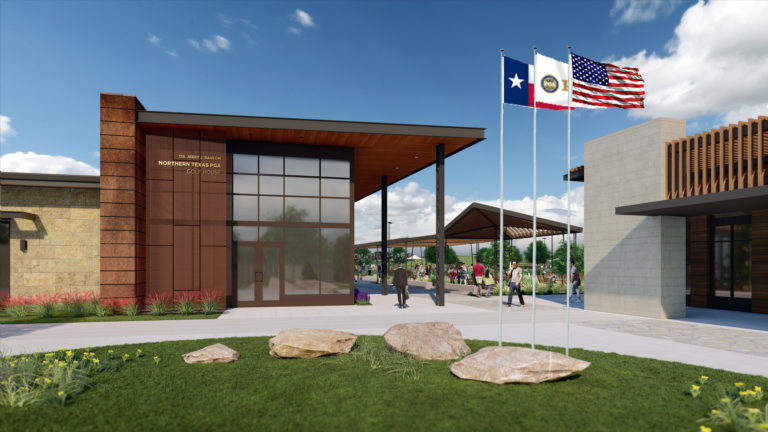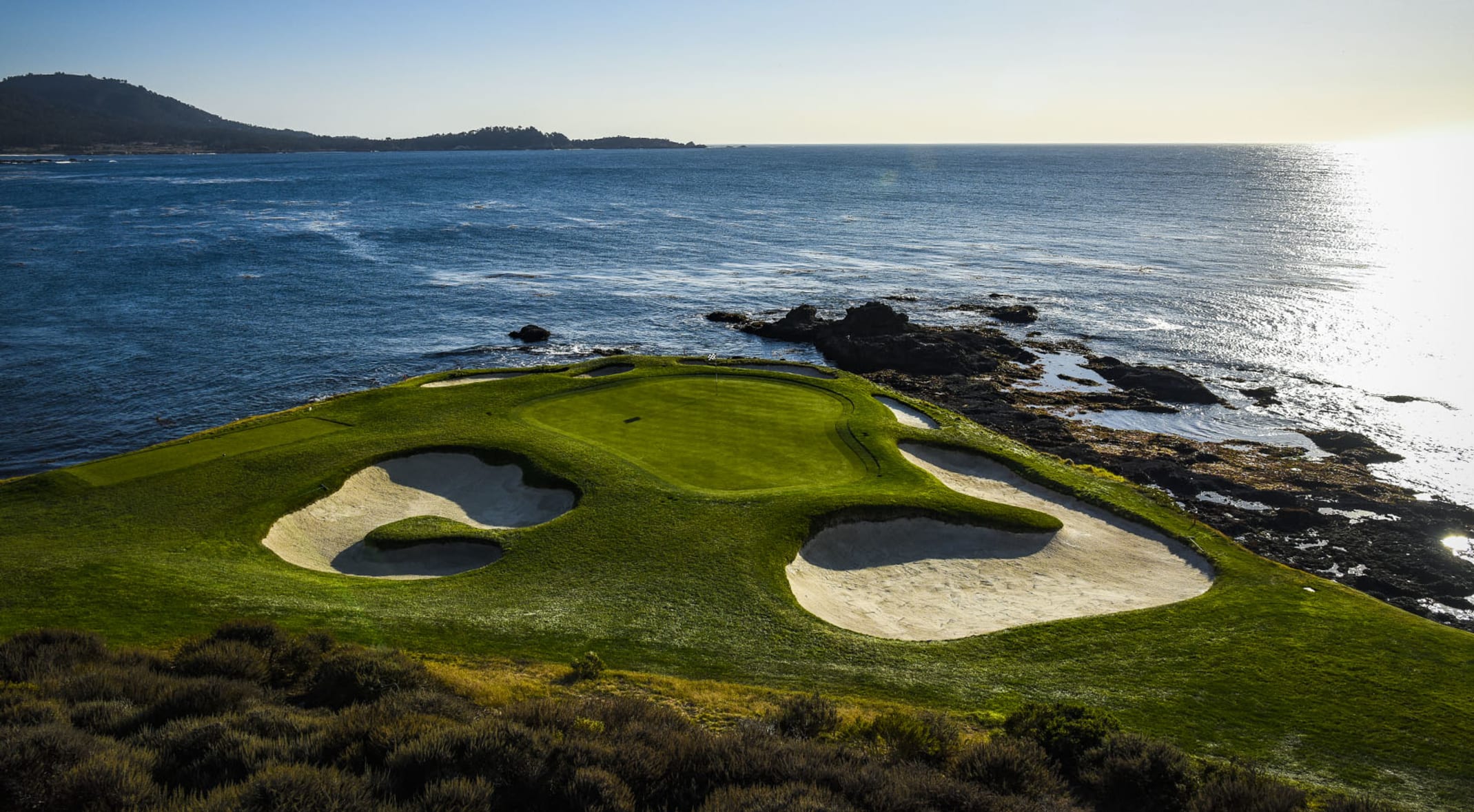Most of the courses on the PGA Tour and PGA Tour Champions are private, with limited access, but you can surely tee it up on any of the below tracks
Editor’s Note: A version of this story was originally published on FarAndWide.com, to whom this author formerly contributed.
AUSTIN, Texas (Aug. 2, 2021) – Golf is a visual sport, and when golfers of any skill level watch the game played at the highest level on the PGA Tour and PGA Tour Champions, it’s only natural for them to picture themselves standing on the tee at one of the courses hosting the event, with a club in hand and with the fairways and greens surrounded by colorful galleries standing hushed as every swing is made.
While most golfers will never see the inside of the ropes during a PGA Tour event, they can play many of the courses used for those tournaments. It’s a rush to stand in the middle of a fairway where the likes of Tiger Woods, Jordan Spieth and Rory McIlroy have played and test your game.
Many of the courses used for PGA Tour events are private, allowing little to no public play, but some are not.
Let’s take a look at 14 of the courses used for PGA Tour and PGA Tour Champions events where golfers can travel to walk in the footsteps of the best in the business, and dream.
Sea Island Resort’s Seaside Course – Sea Island, Georgia
Home of the PGA Tour’s RSM Classic
Sea Island’s Seaside, a traditional Scottish links-style course, is routed along the ocean and combines its natural setting with a track that is both challenging and fun. The Seaside course was re-designed by golf architect Tom Fazio, who refocused and combined two nine-hole tracks designed by famous golf course architects Harry S. Colt (Seaside) and Charles Alison (Marshside) that originally opened in 1929.
The legendary Bobby Jones described the original Seaside nine as among the best he ever played. Fazio’s work, according to PGA Tour player and local resident Davis Love III, transformed two nines “from 18 holes that didn’t match into 18 matchless holes.”
The impeccably manicured fairways and greens are bordered by sweeping dunes mixed with native grasses, wildflowers and bunkers, and the wind creates a different golf experience daily. Seaside is routinely ranked among the top 100 courses in the United States.

Plantation Course at Kapalua – Kapalua, Maui, Hawaii
Home of the PGA Tour’s Sentry Tournament of Champions
Designed by Bill Coore and Ben Crenshaw, the Plantation Course was fashioned on a grand scale in keeping with its location on the slopes of the West Maui Mountains and offers dramatic Pacific Ocean views from virtually every hole.
Consistently ranked as the top golf track in America’s 50th state, the Plantation Course plays a lengthy 7,411 yards from the back tees and at a par of 73. Its layout challenges all levels of players, even the pros, but its wide fairways and generous greens make the course very playable for the average golfer. With dramatic elevation changes, the Plantation Course offers plenty of downhill tee shots.
“It’s interesting. You really have to learn the place — in the fairways, even,” said PGA Tour player Keegan Bradley, the winner of the 2011 PGA Championship. “You hit a lot of shots off funky or downhill lies. It’s a great course, it’s so fun to play.”
Torrey Pines Golf Course’s South Course – San Diego, California
Host of the PGA Tour’s Farmers Insurance Open
Designed by Californian William Bell, Sr. in 1957 and renovated in 2001 by Rees Jones in preparation for the 2008 U.S. Open Championship, Torrey Pines’ South Course boasts dramatic Pacific Ocean coastline views as well as some of the most challenging golf in the country. When stretched to its maximum length of 7,628 yards, this brute is the longest golf course played on the PGA Tour, but it’s okay to move up a few tees and play into the greens from close to the same positions as the professionals.
Torrey Pines Golf Course is recognized as America’s premier municipal golf course owned and operated by a city, in this case, the City of San Diego.
The facility’s South Course was the site of perhaps the most memorable modern-day U.S. Open, when in 2008, under the typically brutal conditions of this major tournament, an injured and hobbling Tiger Woods defeated Rocco Mediate in a sudden-death playoff after 90 grueling holes of major championship golf. The South Course will host the U.S. Open again in 2021.

TPC Scottsdale’s Stadium Course – Scottsdale, Arizona
Home of the PGA Tour’s Waste Management Phoenix Open
Designed by Jay Morrish and Tom Weiskopf, the Stadium Course was purpose-built to host the Phoenix Open, and it has done so since 1987. The tournament is the PGA Tour’s best attended event, drawing nearly 500,000 enthusiastic spectators each year.
Built with high drama in mind, the course includes a thrilling finishing stretch that crescendos at the famous par-3 16th hole, nicknamed “The Coliseum,” where players are surrounded by stands filled with raucous fans. The hole is considered the loudest in golf, a place where spectators become central to the event.
The course plays to over 7,200 yards from the tournament tees, but the layout has more forgiving fairways than many other area desert courses. Trouble comes in the form of 72 bunkers that are deep and strategically placed, and on the greens, which are rather large but feature many tricky twists and turns and run fast. Desert vegetation is scattered about the course, and water comes into play on six of the holes, including three of the last four.
Pebble Beach Golf Links – Pebble Beach, California
Home of the PGA Tour’s AT&T Pebble Beach Pro-Am and the PGA Tour Champions Pure Insurance Championship
How do we love Pebble Beach Golf Links? Let us count the ways.
Pebble Beach GL is unanimously rated the No. 1 public course in the country, thanks to its prestigious championship pedigree and its star-studded history. Then there’s the take-your-breath-away beauty as the fourth hole begins a stretch of seven stunning seaside holes perched atop dramatic cliffs, and then finishes with the famed par-5 18th along the edge of the Pacific above the crashing surf. This is a place where the perilous Cliffs of Doom come into play but where there are also plenty of heroic shot-making opportunities.
Pebble’s sixth through eighth holes might be golf’s real “Amen Corner,” or at least the West Coast’s equivalent, with a few Hail Marys thrown in over an ocean cove on the eighth from atop a 75-foot-high bluff. Recent improvements to America’s most famous course anyone can play include the redesign of the once-treacherous 14th green and reshaping of the par-3 17th green, both planned by the late Arnold Palmer’s design company a few years back.
Coco Beach Golf & Country Club’s Championship Course – Rio Grande, Puerto Rico
Home of the PGA Tour’s Puerto Rico Open
Formerly known as Trump International Puerto Rico, Coco Beach G&CC was never owned by Donald Trump at all. The former owners elected to lease Trump’s name brand, before he was President, in hopes of bringing recognition to this facility located on the north shore of Puerto Rico 20 minutes east of San Juan.
The Championship Course, a combination of the facility’s Lakes and Ocean nines, maintains some of the best playing conditions on the island territory and at the elite level of many upper-end mainland resorts. The terrain here is very flat which makes it plenty walkable, and the fairways are framed with palm trees. There are a handful of water hazards to contend with along the way and the greens are generous in size.
The course, designed by World Golf Hall of Famer Tom Kite, tips out at more than 7,500 yards but the playing widths are generous enough that players can reach back and comfortably take a rip with their driver on most holes. The most formidable hazard is the large grass bushes found throughout the routing, which are so dense they gobble up balls with little chance of retrieval. Iguanas are frequent visitors in the rough and occasionally take a dip in the water hazards.
PGA National Resort’s Champion Course – Palm Beach Gardens, Florida
Home of the PGA Tour’s Honda Classic
PGA National Resort’s Champion course, with its demanding “Bear Trap,” annually provides the toughest tournament test of golf during the PGA Tour season. Originally designed by Tom and George Fazio for major tournament play, the Champion Course was redesigned by the legendary Jack Nicklaus in 2014 and features generous landing areas and spacious and accepting, if demanding putting surfaces.
Golfers are presented with course management challenges throughout the round while five sets of tees to make the track more playable for golfers of all levels.
The Champion Course’s famed “Bear Trap” (holes 15, 16 and 17) is considered one of Florida’s most notable golf challenges, as well as one of the toughest stretches in golf.
“I don’t care if they make golf balls that go for a thousand yards, the Bear Trap will stand the test no matter what the equipment is,” Nicklaus said about his creation. “It’s not about length, it’s about precision. It’s about guts. It’s all about what do you have in your chest that you can finish those holes.”

Bay Hill Club & Lodge – Orlando, Florida
Home of the PGA Tour’s Arnold Palmer Invitational
From the first tee, there’s something about the lay of the land of Bay Hill that makes any golfer’s heart beat faster. It certainly had that effect on the legendary Arnold Palmer, who fell in love with the property and bought it in 1975.
Originally designed by Dick Wilson in 1961 and tweaked through the years by the late Palmer, the golf course is a regal testament befitting the King of Golf. Palmer polished the original visions of Bay Hill into the prestigious course it is today with the stature of a world-class facility.
The breathtaking course sweeps across 270 acres along the shores of the Butler Chain of Lakes. The Champion and Challenger nines (which host the PGA Tour event) and Charger links offered 27 holes of tour championship golf. Bay Hill is considered one of the top golf resort destinations in America, and is included on many top 100 lists.
TPC Sawgrass’s Stadium Course – Ponte Vedra Beach, Florida
Home of the PGA Tour’s THE PLAYERS Championship
Working with renowned golf course architect Pete Dye, then-PGA Tour commissioner Deane Beman created a course design that favored no particular player or style of play. The result is a truly balanced course. With its signature island green on the par-3 17th hole being one of the most recognized in golf, this legendary track has captured the imagination of golf fans all over the world and is consistently named among the top golf courses worldwide.
While the watery 17th hole gets a lot of attention, the closing hole on this golf course – a 462-yard, par-4 guarded by water down the left side – is a formidable finish to a memorable round. Players find a course routing laid out so no two consecutive holes ever play in the same direction.
The championship tees stretch the Stadium Course to 7,245 yards but there are four other yardage options to suit the level of every player.
Built with the intention of being home to THE PLAYERS, the course was created for spectators. It was designed as the first stadium-style golf course, offering fans clear and stunning views. Traditional Scottish links-style bunkers, sandy waste areas and water hazards that come into play on every hole make the Stadium Course even more interesting. There are also hundreds of oaks, pines and palms throughout the course.
Innisbrook Golf Resort’s Copperhead Course – Palm Harbor, Florida
Home of the PGA Tour’s Valspar Championship
A favorite among PGA Tour professionals, the Copperhead Course at Innisbrook features pine tree-lined fairways and rolling terrain, and at more than 7,200 yards, it poses a lengthy challenge for even the longest hitters.
A combination of beauty and challenge, the surrounding lakes and ponds are home to abundant wildlife, including fox squirrels, bald eagles, alligators, blue herons and many other types of waterfowl. Copperhead provides the opportunity to enjoy golf the way nature intended.
Because of its famous “Snake Pit” finish, most people think the Copperhead Course takes its name from the venomous viper. But while the twisty layout can quickly strike, the name actually comes from the numerous copper pennies the crew found while building the Larry Packard design in the early 1970s (no one is sure why they were there).
With marked elevation changes and tight corridors of trees, the Copperhead is a shotmaker’s course. Holes of note include the dogleg sixth, which requires a left-to-right shot off the tee then the opposite to the green, and the par-5 14th, a double dogleg. Then there’s “the Snake Pit,” composed of the tough 16th doglegs around a lake, the long uphill No. 17 and the 18th, which is strewn with bunkers.

TPC San Antonio’s AT&T Oaks Course – San Antonio, Texas
Home of the PGA Tour’s Valero Texas Open
The AT&T Oaks Course, designed by PGA Tour legend Greg Norman with player consultant Sergio Garcia, reflects the Tour’s departure from the modern tournament style course (expansive grass areas and spectator mounding) to a more natural look and feel, without sacrificing the fan experience, making it very tournament friendly.
The AT&T Oaks Course has a traditional design that balances narrower tree-lined fairways with wider fairways offering multiple routes (i.e., strategic options) to the green. Playing at a par of 72 and at a healthy 7,435 yards, the course has forced carries on only two holes, but demands respect and can quickly take its pound of flesh if the golfer’s game gets wayward.
Jimmy Walker, the 2015 winner of the Valero Texas Open, understands the grumbling about Norman’s difficult layout, including accusations that several greens are too severely sloped and penal.
“It’s tough in the fact that there’s no real let-up on the whole golf course,” said Walker, who also won the PGA Championship in 2016. “There’s a lot of places you go play where you kind of get over your humps on the golf course, and once you get over it, you feel confident about the rest of the day. It’s one of those courses where if you’re not careful, you can make a quick double (bogey) really fast.”
Harbour Town Golf Links – Hilton Head, South Carolina
Home of the PGA Tour’s RBC Heritage
Harbour Town Golf Links is the course that literally put Hilton Head Island on the map and more than 40 years later, it remains one of the most revered tracks in the world. This distinguished course places a premium on finesse, imagination and shot making, rather than strength, and a par-4 18th hole that is one of the most recognizable holes in all of golf.
The crowning achievement of famed designer Pete Dye (with help from Jack Nicklaus), no golf excursion to Hilton Head Island is complete without experiencing this Lowcountry legend.
The par-71 course covers 7,099 yards of flat terrain. Harbour Town’s sloping greens are small and demanding. There are several challenging par-3s but the signature hole of the golf course is the infamous 18th, a tricky 458-yard par-4 is that requires a long tee shot towards the iconic lighthouse. The breeze from the Calibogue Sound is definitely a factor in the difficulty of course and especially its closing hole.
TPC Louisiana – Avondale, Louisiana
Home of the PGA Tour’s Zurich Classic of New Orleans
The breathtaking scenery of the Mississippi River delta south of the Crescent City is one of the highlights of the course at TPC Louisiana. The routing stretches over 250 acres of wetlands and is a grand representation of the natural local habitat.
The golf course is part of the Audubon Golf Trail and a proud member of the Audubon Cooperative Sanctuary program, providing a landscape that many have compared to a private nature reserve.
The routing here incorporates stately stands of cypress and oak trees — with designer Pete Dye adding more than 100 bunkers as well as five ponds to increase the challenge. which come into play. There are five sets of tees at TPC Louisiana ranging from 7,400 yards from the tips, more than enough for the game’s best golfers, to 5,121 yards from the front tees.
TPC Louisiana boasts a series of short but compelling par-4 holes to balance the longer ones and delivers a great blend of challenge and playability. The signature hole on the golf course is the par-5, 18th hole. Water is in play for the entire right side of the hole, making for a challenging finish for golfers of all skill levels.

Top of the Rock – Ridgedale, Missouri
Home of the PGA Tour Champions Bass Pro Shops Legends of Golf at Big Cedar Lodge
Top of the Rock Golf Course is anything but a regular professional tour stop — in fact, it’s a complete departure from the norm while being a nod to the direction golf is now taking.
Known as the first-ever par-3 course to be included in a professional championship, Top of The Rock is perched high above Table Rock Lake, with peaceful waterfalls, wandering creeks, bass-filled ponds and pristine lakes — a true celebration of nature and a melding of the best things about the game.
The course was designed by Jack Nicklaus, his first in the state of Missouri, and the first Jack Nicklaus Signature Par 3 course ever built.
Top of the Rock is routed across 47 acres, with more than 38 percent of the area kept in a natural state or planted with native grasses, wildflowers or native trees. It has the flexibility to offer a challenge no matter what skill level, whether it be a family outing, first timer or the most avid golfer.











